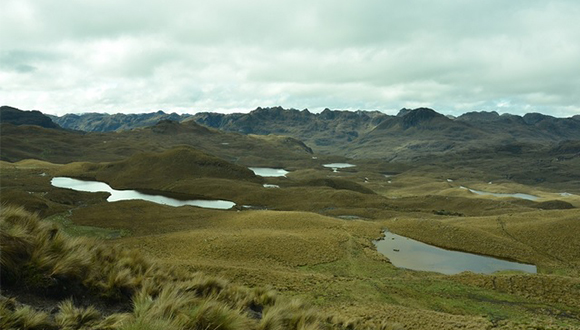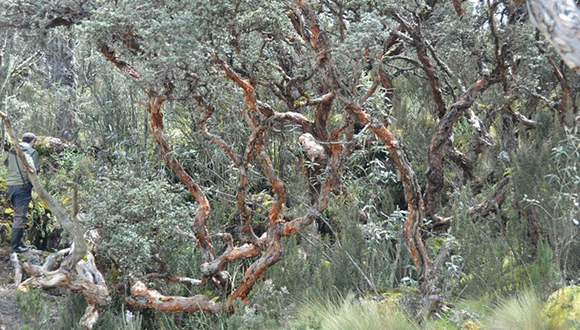ECUAFLUX project studies the impact of climate change in Ecuador’s Andean mountains
The lakes of El Cajas National Park, located at 4,000 metres high in Ecuador’s Azuay province, are the scene of the fieldwork carried out within the research project ECUAFLUX, an initiative to analyse the carbon cycle in the Andean basins of Ecuador and foresee the impact of climate change on natural ecosystems. Carles Gracia, CREAF researcher and UB lecturer, is one of the experts who participates in the project.

 The project will contribute to understand the role that different elements of the natural ecosystem play in the carbon cycle in three basins of Andean mountains with some common features: they do not receive external water supplies (except for rain) and present different concentrations of dissolved and particulate organic carbon in lakes. Stands of Polylepis reticulata —an Andean tree which lives in extreme conditions and is one of the main agents involved in carbon fixation— make up the characteristic vegetation of the basins studied in El Cajas National Park, which has a rich lake ecosystem in a surface of 29,000 hectares.
The project will contribute to understand the role that different elements of the natural ecosystem play in the carbon cycle in three basins of Andean mountains with some common features: they do not receive external water supplies (except for rain) and present different concentrations of dissolved and particulate organic carbon in lakes. Stands of Polylepis reticulata —an Andean tree which lives in extreme conditions and is one of the main agents involved in carbon fixation— make up the characteristic vegetation of the basins studied in El Cajas National Park, which has a rich lake ecosystem in a surface of 29,000 hectares.
Carles Gràcia, member of CREAF and UB professor, explains that “the species Polylepis reticulata lives at 4,000 metres high, in an environment of permanent changing extreme conditions due to the effects of the climate change; therefore, this species is a very sensitive indicator to the climate change”.

ECUAFLUX is supported by the National Secretary of Higher Education, Science, Technology and Innovation of Ecuador and the University of Cuenca (UC). The Technical University of Loja (Ecuador), the UB, the Spanish National Research Council (CSIC), the CREAF, the Forest Technology Centre of Catalonia (CTFC), the Centre for Advanced Studies of Blanes (CEAB-CSIC), the National Research Council of Italy (CNR) and the Project Centre on Mountain Forests (Italy) also collaborate in the initiative.
Promotion of scientific collaboration with Ecuador
It is important to remember that in 2013, the UB and the University of Cuenca signed a collaboration agreement to enhance scientific research on terrestrial and aquatic ecosystems in Ecuador. This agreement has led to an expert collaboration programme coordinated by Carles Gràcia and Henrietta Hample. Moreover, a research group on ecophysiology and forest modelling, coordinated by Professor Gràcia, was created in 2014.
ECUAFLUX is a pioneering project in the Andean country and will study carbon flux and its relationship between vegetation, sun and water bodies in three experimental basins of Andean mountains.
It will provide valuable information to improve water management in headwater catchments that supply the city of Cuenca, a city of 350,000 inhabitants which is the third most populated city in the country after Guayaquil and Quito.
The project is coordinated by Henrietta Hampel and Raúl Vázquez (University of Cuenca). Experts Carles Gràcia, Francesc Sabater, Santi Sabaté, Miguel Alonso and Daniel Nadal (UB), and Ramon Vallejo and Maria Teresa Sauras (UB) also collaborate in the project.
ECUAFLUX —a pioneering project in the Andean country— will study carbon flux and its relationship with vegetation, sun and water bodies in three experimental basins of Andean mountains.






